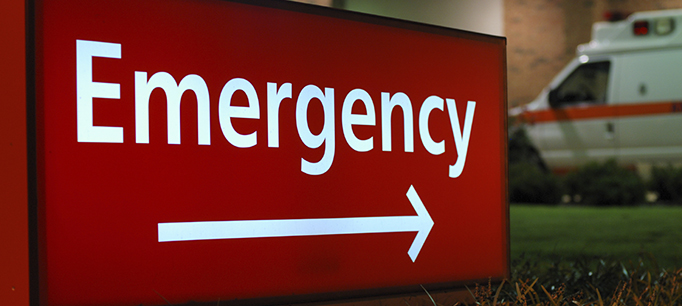With millions of Californians gaining health insurance as a result of the Affordable Care Act (ACA), there is concern about whether the state’s healthcare delivery systems—particularly hospital emergency departments (EDs)—will be able to absorb the additional patients.
These concerns are understandable. EDs are a critical access point to health care for all Californians—and, because they are required to serve patients regardless of insurance status or ability to pay, EDs are particularly important for uninsured and publicly insured residents.
 Before implementation of the ACA, the uninsured relied on EDs for care more than those with private insurance but less than Medi-Cal beneficiaries. This was largely because uninsured patients are often billed for the services they receive, while Medi-Cal beneficiaries have either nominal or no financial responsibility for ED visits. Medi-Cal has grown significantly under the ACA—in 2014, monthly enrollment increased by 40 percent to cover more than 12 million Californians.
Before implementation of the ACA, the uninsured relied on EDs for care more than those with private insurance but less than Medi-Cal beneficiaries. This was largely because uninsured patients are often billed for the services they receive, while Medi-Cal beneficiaries have either nominal or no financial responsibility for ED visits. Medi-Cal has grown significantly under the ACA—in 2014, monthly enrollment increased by 40 percent to cover more than 12 million Californians.
Newly released state data provides a first glimpse of ED usage under the ACA. While ED usage may shift in the future, these first-year figures suggest there has not yet been a dramatic change statewide. Total ED visits and visits that did not result in a hospital admission did increase in 2014. However, this growth was in line with the upward trend over the past decade.
 The proportion of ED visits involving moderate and low urgency continued its recent downward trend in 2014. And there was no discernable change in the proportion of ED visits that required patients to be admitted to the hospital.
The proportion of ED visits involving moderate and low urgency continued its recent downward trend in 2014. And there was no discernable change in the proportion of ED visits that required patients to be admitted to the hospital.
The ACA’s impact on the use of health services and health care delivery systems will be the subject of considerable research and a focus for policymakers over the next several years. It will be important to continue to carefully monitor and assess health care use, particularly across different hospitals, regions, and patient groups to ensure that hospital systems throughout California are functioning well and residents have access to the services they need.
NOTE: The 2014 data is from the preliminary datafile. Figures include information from 292 hospitals that had data available in all years, which represent about 90 percent of all ED visits reported. The urgency or severity level of ED visits that did not result in a hospital admission is based on Current Procedural Terminology (CPT) codes. Low urgency is defined as visits categorized as minor and low/moderate (CPT codes 99281 and 99282). Moderate urgency is defined as visits categorized with CPT code 99283 and high urgency includes visits categorized as severe with and without threat (CPT codes 99284 and 99285).


